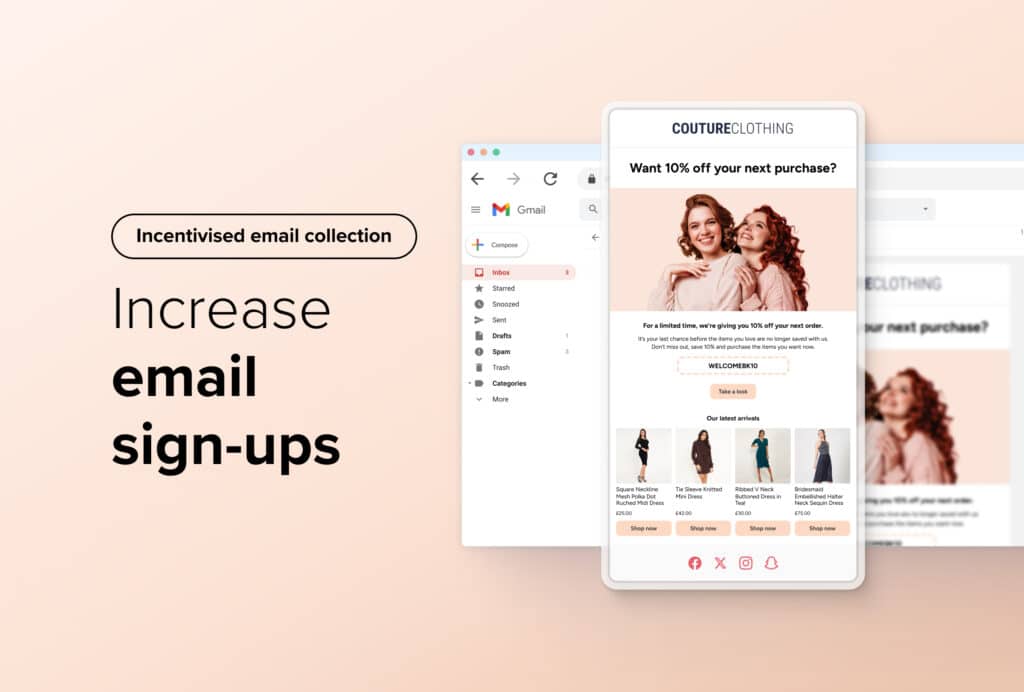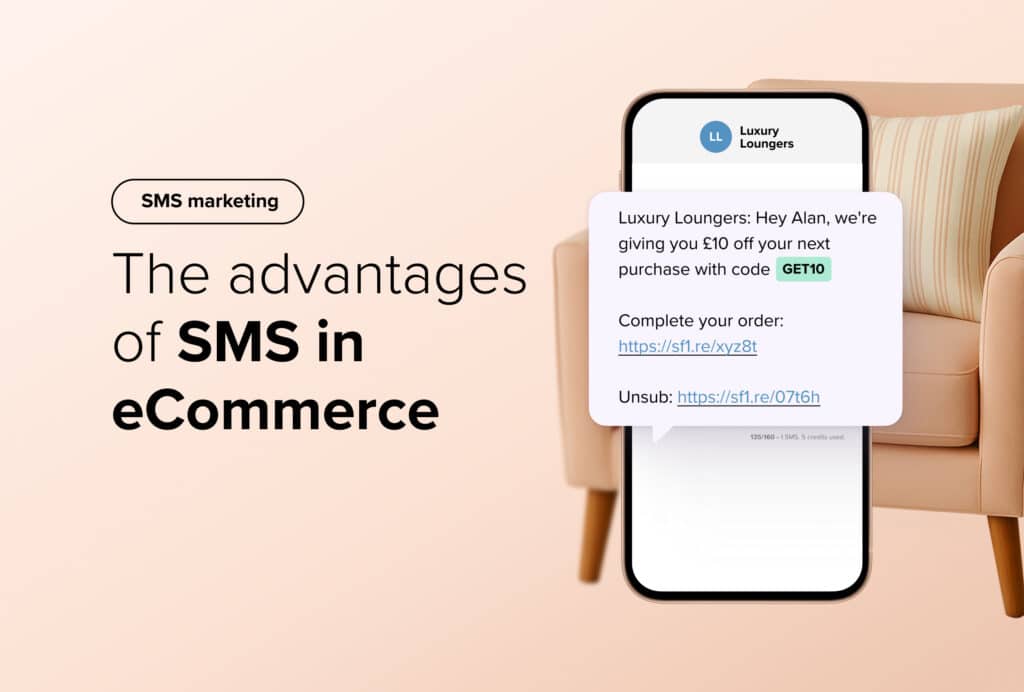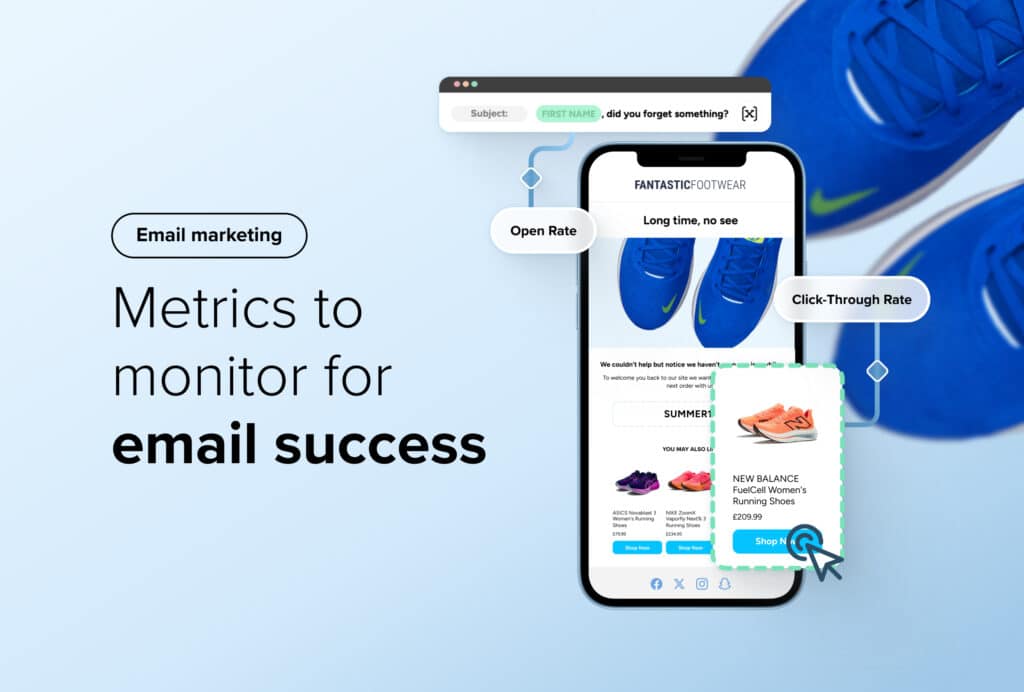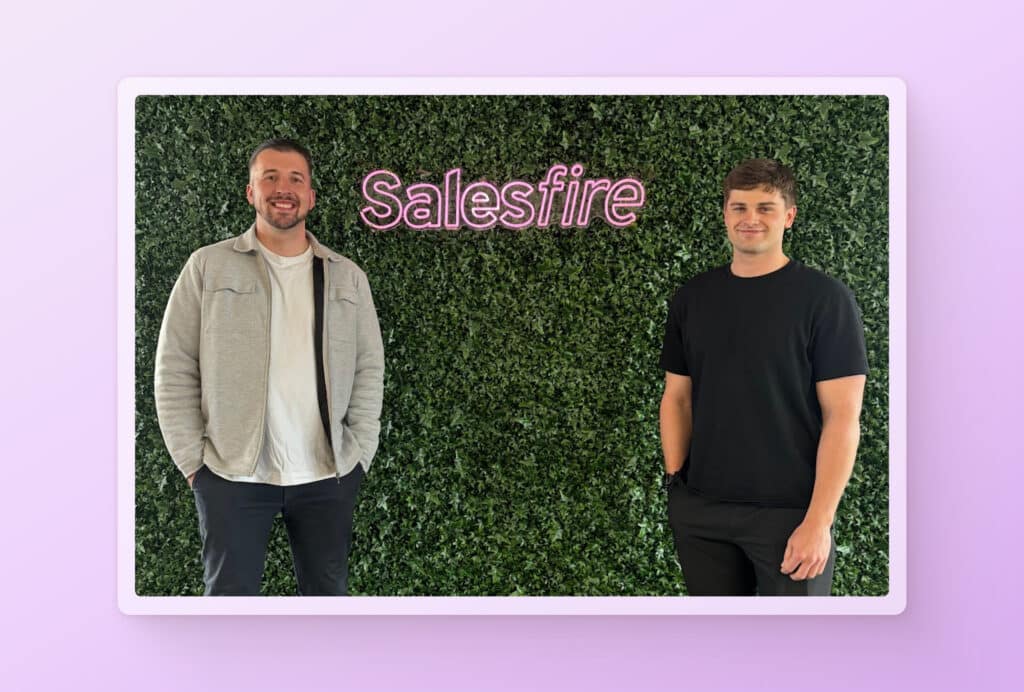How to Grow Your Email List
By Courtney O'Riordan • Last updated: Tuesday Mar 4th, 2025

As privacy regulations tighten and consumers become more aware of the number of brands with access to their data, retailers need to build trust through a commitment to privacy-first marketing.
Navigating this challenge will require businesses to pivot their digital marketing strategies towards methods that can create sustainable growth and boost customer engagement.
eCommerce teams can look towards improving their data collection strategies for a rich source of customer data to use in retargeting efforts.
In this article, we’ll explore the most effective ways retailers can grow their email subscriber bases to use in ad strategies and for delivering personalised communications.
What is the importance of first-party data?
Building up your customer data will help mitigate any negative impacts your brand may face should new privacy laws and policies come into effect.
Although Google abandoned its complete phase-out of third-party cookies, it is still committed to improving user privacy with increased measures to give individuals the option to set their cookie preferences across their web browsing.
Collecting first-party data strengthens your retargeting strategy by providing a rich source of contacts you can reach via ad and email marketing strategies.

Newsletter sign-ups offer a reliable source of such data, allowing you to:
- Have access to a wealth of insights: Collecting email addresses unlocks the ability to understand the preferences, interests and engagement history of your audiences, informing future marketing campaigns.
- Own and control your data: This autonomy becomes increasingly vital as the industry navigates evolving privacy regulations and seeks to build consumer trust.
- Enhance customer relationships: Building meaningful relationships via newsletters provides the opportunity to learn more about their audiences.
- Optimise retargeting strategies: Utilise the data you’ve collected to create highly targeted ads that speak directly to your target audience. These can be used to deploy effective retargeting campaigns.
- Future-proof marketing: Investing in first-party data through email newsletter sign-ups is a strategic move for future-proofing customer engagement and ensuring sustained business growth.
Building a list of GDPR-compliant subscribers, made up of your target audience, should be a priority for all online businesses.
With this in mind, let’s examine how the industry is performing at present to determine where improvements can be made.
The current state of email collection
For retailers to optimise their data collection techniques and take advantage of the insights available from email marketing, it’s essential to understand how email collection works today.
Retailers should note that:
- All sites can benefit from optimising their email capture techniques: By simply updating their site with Salesfire’s data capture technology, Charles Clinkard witnessed a remarkable 51% increase in email sign-ups for their mailing list within the first few days.
- Special interest sectors receive higher subscription rates: Salesfire has found that sectors with a niche are the most successful at converting an on-site visitor to a newsletter subscriber.
- Subscriber rates can differ across customer segments: Expect to see varying subscriber rates across your target audience depending on gender, age and other factors.
Naturally, your site may experience specific challenges due to where you fall in the market.
However, there’s a range of tactics available to eCommerce stores to ensure these challenges don’t hinder their ability to reach their goals through significant list building.
Suggested reading: Discover how you can future-proof your eCommerce business using your email subscriber lists in our article, ‘First-Party Data Dominance: The Power of Email Subscriber Lists‘.
The best incentives to boost newsletter sign-ups
Offering an incentive in exchange for a subscription has proven to be a successful way to increase email newsletter sign-ups across all industries.
But, what incentives work best to boost the number of sign-ups retailers receive through an email collection campaign?
1. Replace discount percentages with monetary incentives
It’s common practice to offer your customers a percentage discount incentive in exchange for their email addresses.
Although this may seem effective, Salesfire has found that the average email sign-up rate for such incentives is lower than offering a fixed monetary value discount.
Campaigns featuring a fixed monetary incentive experience a significantly higher sign-up rate of 8.27%, whereas a percentage discount sits at 4.71%.

Figure 1: Research show that users find it more convenient to calculate their savings as a monetary value as opposed to a percentage and therefore favour signing up for campaigns displaying that incentive.
From this, we can conclude that simply switching your ‘10% off your next order when you sign up’ call to action with ‘£5 off your next order when you sign up’ may improve your first-party data collection success rate.
Removing the need to calculate the monetary value of a percentage discount speaks directly to modern consumers’ need for convenience.
Simplifying the communication of your incentive will see more shoppers sign up with their email addresses, unlocking the ability for your brand to build a loyal customer base through future communication.
Pro tip: Your incentives should be determined by the profit they will bring to your company.
To inform the monetary value you offer your customers, calculate the annual subscriber value of an email to understand the revenue this will drive for your businesses in the future.
2. Consider lower-value discounts
Some may think that offering a higher discount will result in higher sign-ups. Contrary to this belief, Salesfire research has revealed that this is not always the case.
The most successful discounts a retailer can offer to encourage email sign-ups are:
- £10 off: This value results in an average click-through rate of 8.28%.
- £5 off: This value results in an average click-through rate of 8.25%.
These findings can be attributed to the less is more approach. In an eCommerce context, this means that larger discounts can work to devalue a business whilst smaller discounts can evoke feelings of trust.
Learning to differentiate between offering too much or too little can be difficult. However, the above findings can act as a guide to increasing your bank of first-party data.
Best practices for maximising campaign engagement
Once you’ve optimised the incentives that will encourage customers to complete your form, you can improve your success rate further by refreshing the way you present them on-site.
Let’s explore the actionable steps you can take to do this.
1. Increase campaign impression rate
Retailers must consider the point at which an email capture Overlay appears within the user journey.
Visitors are known to bounce after viewing just a couple of pages of a website, meaning you have a limited amount of time to collect their email addresses.
To overcome this challenge, we recommend surfacing Overlays earlier in the shopping journey.
Doing so will maximise impressions, email sign-up rates and first-party data collection.
What you can do: Display a full-screen Overlay on the second-page load of a visitor’s on-site journey.
The key is to strike a balance between not immediately interrupting the user journey and capturing their attention early enough to encourage those crucial sign-ups.
To be able to gather as much valuable information as possible through your newsletter sign-up Overlay without overwhelming the viewer, we recommend taking a two-step approach:
- Step 1: Ask the user to input their email.
- Step 2: Once the first step is complete, ask for the user to input their mobile number.
Implementing this Overlay strategy will allow you to increase your email newsletter sign-ups whilst building a bank of first-party data.
2. Create strategies based on device type
All retailers will understand the importance of optimising their sites for both desktop and mobile due to customer behaviour differing by device type.
The same rule should be applied to email capture campaigns.
For instance, Salesfire discovered that a higher click-through rate is achieved by mobile data capture campaigns (3.21%) than by desktop versions (2.85%).
However, desktop devices see a 2.27% conversion rate whilst mobile sees a 1.81% conversion rate.
This information reveals that mobile browsers are signing up for newsletters but completing their purchase on a different device.
Therefore, surfacing data collection campaigns on mobile devices is vital for retailers to allow shoppers to secure any promotional codes they can unlock for future use.
3. Unify promotions across your site
When creating an optimised email collection campaign, it’s incredibly important to keep your messaging consistent across your site.
Having a sitewide strategy made up of conflicting discounts could lead to you being unable to fulfil your goals and result in little subscriber retention.
To avoid frustrating shoppers and losing valuable data, ensure that all current and future offers are aligned.
Grow your email subscriber database for eCommerce success
As we move into a privacy-first marketing era, relying on first-party data to retarget from your email subscriber base will help you secure profits.
Salesfire’s extensive research has uncovered the key areas in which retailers could improve their list-building tactics.
Revolutionising your email collection campaigns through the steps laid out in this article will provide any eCommerce site with the means to adapt, grow and thrive in the changing landscape of data privacy.

Create successful email collection campaigns that grow your first-party data with Salesfire, email one of our experts at enquiries@salesfire.com or book a free demo of our tools.



